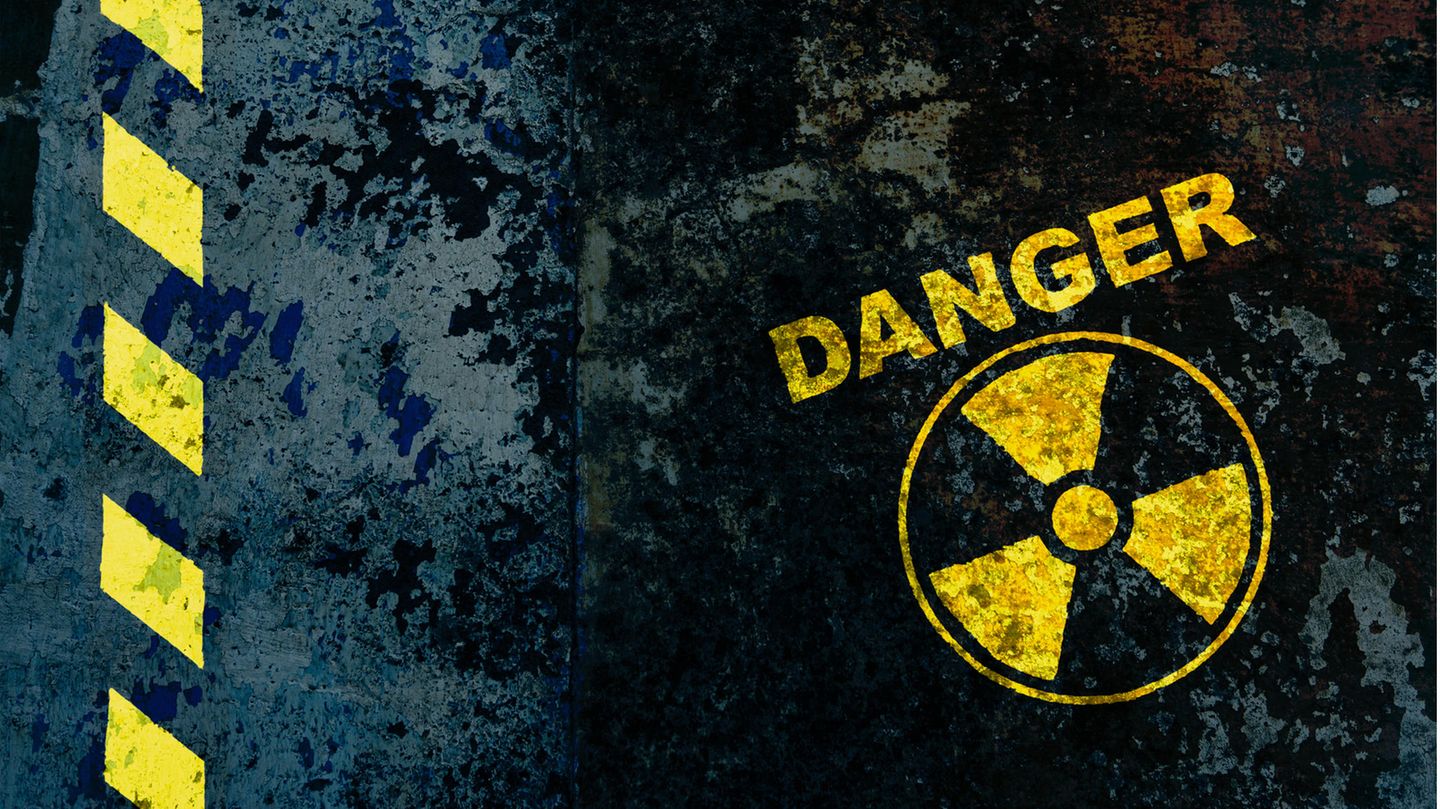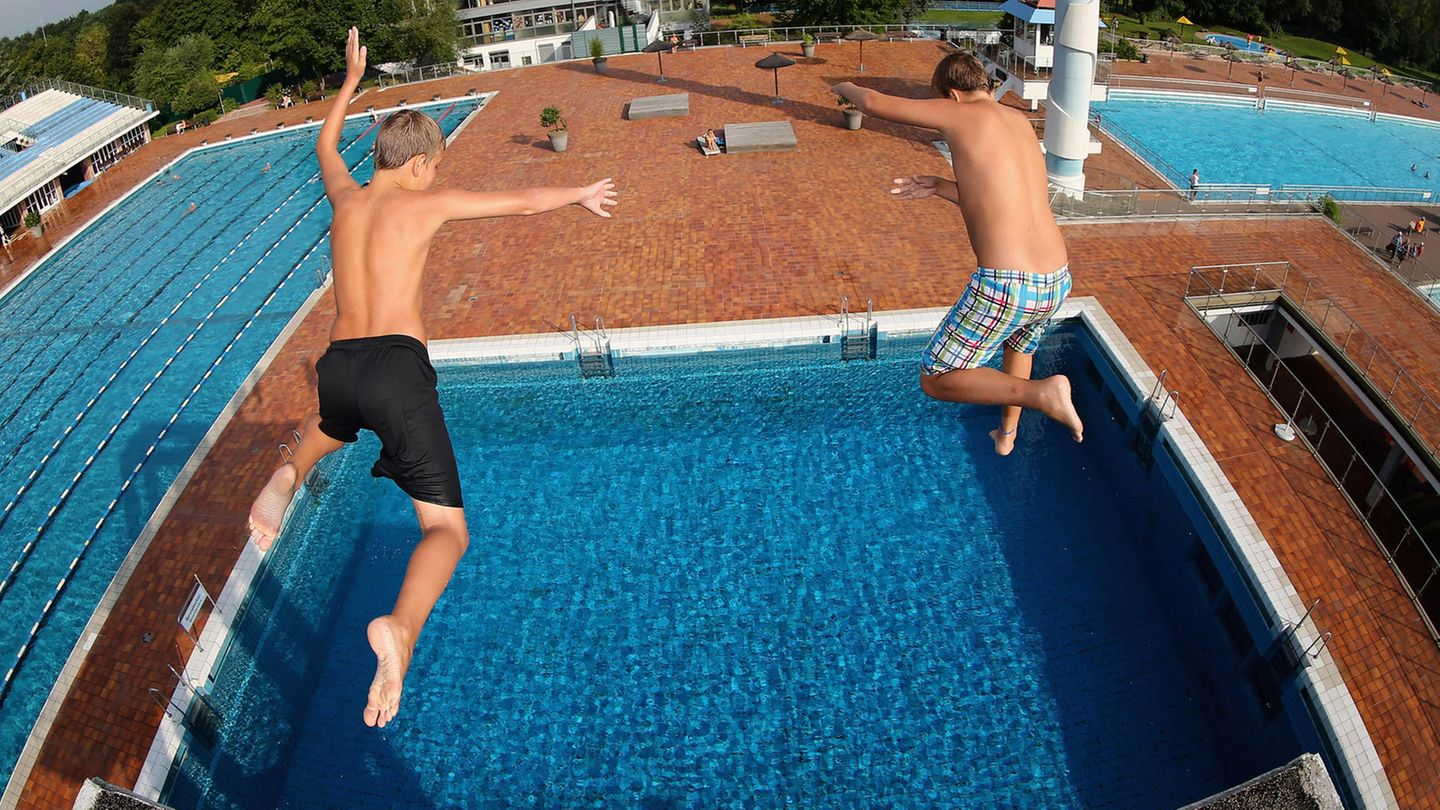The government in Moscow has accused Ukraine, without presenting any evidence, of preparing to use a so-called dirty bomb on its own territory. But what exactly is such a bomb? And how dangerous is she?
Russia has accused Ukraine of planning to use a so-called “dirty bomb” containing radioactive material on its own territory in order to discredit President Vladimir Putin’s government. Although Kyiv and its Western supporters have vehemently denied the allegations, Moscow intends to take them to the UN Security Council. A corresponding discussion of the most powerful UN body behind closed doors should take place on Tuesday, according to diplomatic circles in New York.
Meanwhile, Kyiv itself requested an inspection by the International Atomic Energy Agency (IAEA) to refute the allegations. In the coming days, experts from the organization would examine two Ukrainian nuclear facilities that had been mentioned by Russia, IAEA chief Rafael Grossi announced on Monday evening. However, these locations would be regularly inspected by the IAEA anyway, one of them most recently in September. “No unknown nuclear activity or materials were discovered there,” Grossi said.
What exactly is Russia accusing Ukraine of?
Without providing any evidence, Russia claims that scientific institutions in Ukraine are working on a “dirty bomb” to detonate on their own territory. “According to our information, two Ukrainian institutions have received specific instructions for the production of the so-called ‘dirty bomb,'” said Lieutenant General Igor Kirillov, who is in charge of radioactive, biological and chemical substances in the Russian army, on Monday. “Your work has entered the final phase.” Foreign Minister Sergey Lavrov had previously stated that there was “concrete information about the institutes in Ukraine that have the appropriate technologies to build such a “dirty bomb”.
According to the Russian Defense Ministry, Kyiv intends to detonate the alleged “dirty bomb” as a provocation in its own country. “The aim of this provocation is to accuse Russia of using weapons of mass destruction in the Ukrainian theater of operations, thereby launching a powerful anti-Russian campaign in the world aimed at undermining trust in Moscow,” Kirillov said.
What is a “dirty bomb” anyway?
A “dirty bomb” is a conventional explosive device combined with radioactive material. It does not have to contain highly enriched uranium like that used in an atomic bomb. Instead, for example, nuclear substances from medical devices, nuclear power plants or research laboratories can serve as atomic components. This makes “dirty bombs” much cheaper and faster to produce than nuclear weapons. They can also be transported, for example, on the back seat or in the back of a vehicle.
Unlike an atomic bomb, when a “dirty bomb” explodes, there is no nuclear chain reaction. But their radioactive material is distributed by the detonation in the environment.
How dangerous is a “dirty bomb”?
The number of casualties and the extent of damage from a “dirty bomb” depend on many factors. This includes the type and quantity of conventional explosives and the radioactive substances released, which determine the extent of the explosion and the subsequent radiation exposure.
The weather conditions – especially the wind – at the time of the detonation also have a major influence. In order for the radioactive material to spread over the target area in a “dirty bomb” it must be crushed into powder form. However, if the particles are too fine or are blown away by strong winds, they will scatter too far to do much damage.
The US Department of Homeland Security considers it unlikely that a “dirty bomb” could deliver such a high dose of radiation “that it would cause immediate health effects or death in a large number of people.” To create a “dirty bomb” that could emit lethal doses of radiation would require large amounts of lead or steel shielding material to keep the radioactive material from killing its makers during construction and transportation, according to the Texas Department of Health and Human Services. However, using such insulation would result in the bomb being bulky, difficult to transport and deploy. In addition, the radiation could only spread to a limited extent.
The type of radiation, how long you are exposed to it, and the type of radiation you are exposed to are critical to health effects, according to Scott Roecker, vice president for the nuclear security program at the Nuclear Threat Initiative, a Washington-based nonprofit whether it was ingested through the skin, orally, or inhaled.
According to the US Department of Homeland Security, simply leaving the explosion area can effectively prevent illness. “Even walking a short distance from the detonation site can provide significant protection, as the dose rate decreases drastically with increasing distance from the source,” CNN quoted the agency as saying. In addition, people should cover their noses and mouths to avoid absorbing radiation, go indoors to avoid a cloud of dust, dispose of their clothes in a plastic bag, and then gently wash their skin to remove impurities.
According to Roecker, “dirty bombs” mainly have indirect effects. They are “more of a psychological weapon. If you try to scare people, to intimidate them, then you use such a weapon”, . “Dirty bombs” are therefore aimed more at use in urban areas and are not intended for the battlefield.
The IAEA also warns that even small amounts of radiation from “dirty bombs” can have major psychological and economic effects. According to the experts, regions that were only slightly contaminated could also increase the risk of cancer for the population over the years. The Atomic Energy Agency in Vienna regularly inspects civilian nuclear facilities in Ukraine and around the world to ensure that no fissile material is misused for military purposes.
Has a “dirty bomb” ever been used?
So far, no attacks with a “dirty bomb” have been successfully carried out. However, there were several attempts:
- In 1996, Chechen rebels planted a bomb containing dynamite and caesium-137 in Moscow’s Izmailovo Park. The cesium was extracted from a cancer treatment device. The Russian security services discovered the bomb and defused it.
- In 1998, Chechen intelligence discovered and defused a “dirty bomb” near a railway line.
- In 2002, Jose Padilla, a US citizen with ties to the terrorist organization al Qaeda, was arrested in Chicago on suspicion of planning a “dirty bomb” attack. He was later sentenced to 21 years in prison.
- In 2004, Dhiren Barot, a British citizen and al Qaeda member, was arrested in London and subsequently sentenced to 30 years in prison for plotting terrorist attacks with a “dirty bomb” in the US and UK. However, neither Padilla nor Barot had started building their bombs before their arrest.
What could be behind Russia’s accusation against Ukraine?
The US think tank Institute for the Study of War (ISW) suspects that the Kremlin “probably tried to slow down or suspend Western military aid to Ukraine and possibly weaken the NATO alliance through scaremongering”.
There is also speculation that Russia is planning a “false flag” operation, that is, that President Vladimir Putin’s forces themselves want to detonate a “dirty bomb” in Ukraine and blame Ukrainian forces for it. “You accuse the enemy of preparing to use weapons and then carry them out yourself,” said security expert Oliver Meier from the Institute for Peace Research and Security Policy at the University of Hamburg, describing a possible Moscow strategy. However, it is uncertain whether this scenario will actually occur.
Given the damage Russia could inflict with a “dirty bomb” on its own troops and in the territory it controls, many military analysts doubt it. The ISW agrees: “It is unlikely that the Kremlin is preparing an imminent attack with a ‘dirty bomb’ under a false flag.”
Sources: , ,
Source: Stern
David William is a talented author who has made a name for himself in the world of writing. He is a professional author who writes on a wide range of topics, from general interest to opinion news. David is currently working as a writer at 24 hours worlds where he brings his unique perspective and in-depth research to his articles, making them both informative and engaging.




